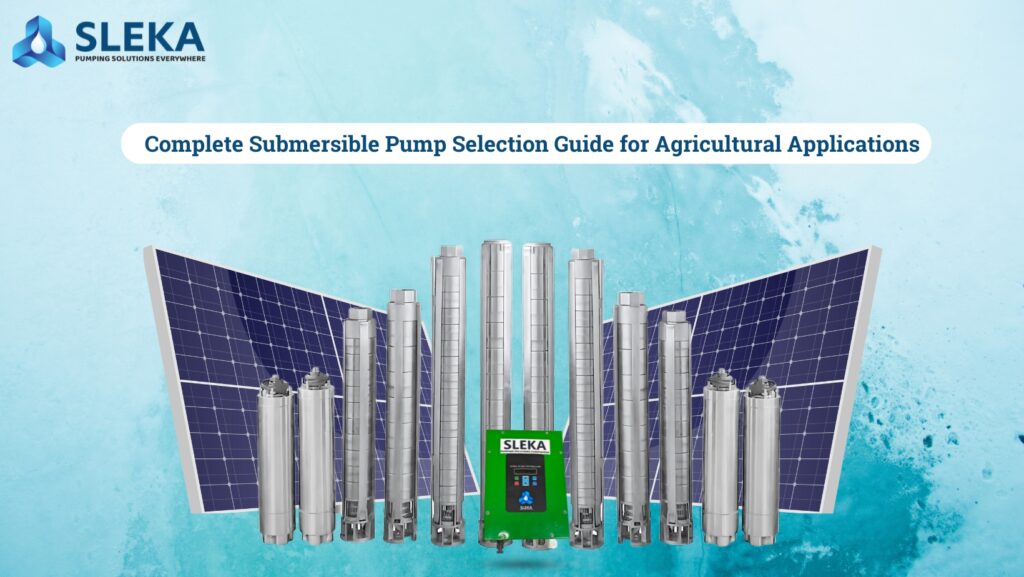The submersible pump market is rapidly expanding, with a projected value of $9.8 billion and a compound annual growth rate (CAGR) of 4.3% through 2030. This growth reflects an increasing demand for efficient farming irrigation solutions, particularly with the rising focus on sustainable agricultural practices and the need for better resource management. Farmers and agricultural businesses are seeking reliable and effective mechanisms to irrigate their crops, leading to an interest in crop-specific pumps tailored to various agricultural applications.
Understanding Submersible Pumps for Agriculture
Submersible pumps are specially designed to operate underwater and are used extensively in agricultural settings for irrigation and drainage. These pumps pull water from deep sources, ensuring that crops receive the necessary hydration. Their efficiency in lifting water from wells or reservoirs has made them a preferred option for many agricultural applications. When considering submersible pumps for agriculture, factors like horsepower, flow rate, and depth of submersion play crucial roles in selecting the right equipment.
Choosing the Right Agricultural Pump: Key Factors
When you buy online, ensuring the right fit for your specific needs is vital. For farming irrigation solutions, consider the type of crops you are cultivating. Crop-specific pumps can be tailored to the water needs of different plants. For instance, high-pressure pumps are ideal for crops with deeper root systems, providing the required water delivery under pressure.
Make sure to evaluate the head requirement—how high the water must be lifted. A simple calculation can be made using the formula:
Total Dynamic Head (TDH) = Vertical Lift + Friction Loss + Valve Loss
Understanding this helps in selecting a pump with adequate horsepower to ensure efficiency and longevity.
Market Trends in Agricultural Submersible Pumps
The shift towards advanced agricultural technologies is driving innovation in submersible pump design. Currently, there is a noticeable trend toward energy-efficient models as farmers aim to reduce operational costs and enhance sustainability. Recent studies suggest that adopting advanced pumps can lead to savings of up to 30% on energy bills compared to older models. This aspect emphasizes the need for decision-makers in procurement to consider the total cost of ownership rather than just the initial purchase price.
For bulk buyers, many manufacturers offer tiered pricing that decreases the unit price with increased volume purchases. Companies looking to purchase multiple units should explore these options, as investing in high-quality pumps can yield a quick return on investment through enhanced crop yields and reduced energy expenses.
Regional Considerations for Agricultural Pump Operations
Different regions have distinct characteristics that influence the selection of submersible pumps. For instance, areas prone to drought may benefit from high-efficiency pumps that minimize water usage. Conversely, regions with abundant water sources might prioritize reliability and capability to handle larger volumes. Developing countries are increasingly investing in modern agricultural techniques, which includes the adoption of submersible pumps, tapping into international supply chains to access advanced technology.
Businesses exploring international markets should conduct comprehensive regional analysis. Understanding local regulations, environmental impacts, and regional agricultural practices can significantly inform the procurement strategy.
Comparative Analysis: Key Players and Their Offerings
When evaluating submersible pumps for agricultural applications, it’s valuable to compare the offerings from various suppliers. For example, SLEKA is known for its robust range of pumps specially designed for agricultural use, while NOBTECH provides advanced materials such as Noryl impellers that enhance durability and efficiency.
Considerations such as warranty, after-sales service, and customer reviews should be factored into the purchasing decision. Robust customer support can significantly enhance the long-term success of your investment.
ROI Calculations: Understanding Your Investment
Investing in submersible pumps presents an opportunity for substantial financial returns for agricultural businesses. ROI can be calculated considering expected yields attributed to improved irrigation from your new pump. Here’s a simple ROI formula:
ROI = (Net Profit from Investment – Initial Investment) / Initial Investment × 100
If a new pump costs $3,000 and is expected to enhance yield by $1,000 annually, the calculation would present a ROI of approximately 33.3%, illustrating a quick recovery of the investment within three years.
Consideration Factors: Making the Right Purchase Decision
When contemplating the purchase of a submersible pump, various factors are essential for making an informed choice. Prospective buyers should consider pressure requirements, energy efficiency ratings, and maintenance needs.
Furthermore, expert recommendations suggest that the longevity of a pump significantly contributes to agricultural applications; thus, choosing quality over cost is paramount. A durable pump can withstand the rigors of agricultural demands, leading to minimal downtime and consistent performance.
Frequently Asked Questions
- What is the best type of submersible pump for crop irrigation?
- The best type often depends on the specific needs of your crops. High-efficiency pumps are recommended for larger farms with varying crop requirements.
- How do I calculate the flow rate needed for a submersible pump?
- The flow rate can be determined by assessing the area to be irrigated and the water needs of the specific crops.
- Are there significant savings associated with energy-efficient pumps?
- Yes, energy-efficient pumps can save up to 30% on energy costs, significantly affecting operational budgets over time.
- What factors influence the decision to buy submersible pumps online?
- Factors include cost, supplier reputation, customer service, warranty offers, and shipping terms.
- Can I rely on submersible pumps in diverse agricultural climates?
- Absolutely, submersible pumps are versatile and can be adapted for various climates by selecting the appropriate model for your specific application.
In conclusion, understanding the intricacies of the submersible pump market, particularly focused on agricultural applications, is essential for making informed decisions. For further insights into solar pumps in agriculture, visit – explore SLEKA’s range of submersible pumps. Additionally, for more information on Noryl impellers and diffusers, do check out – NOBTECH Products.
With the right knowledge and resources, decision-makers can navigate the complexities of purchasing submersible pumps, ensuring efficiency and profitability for their agricultural operations.


